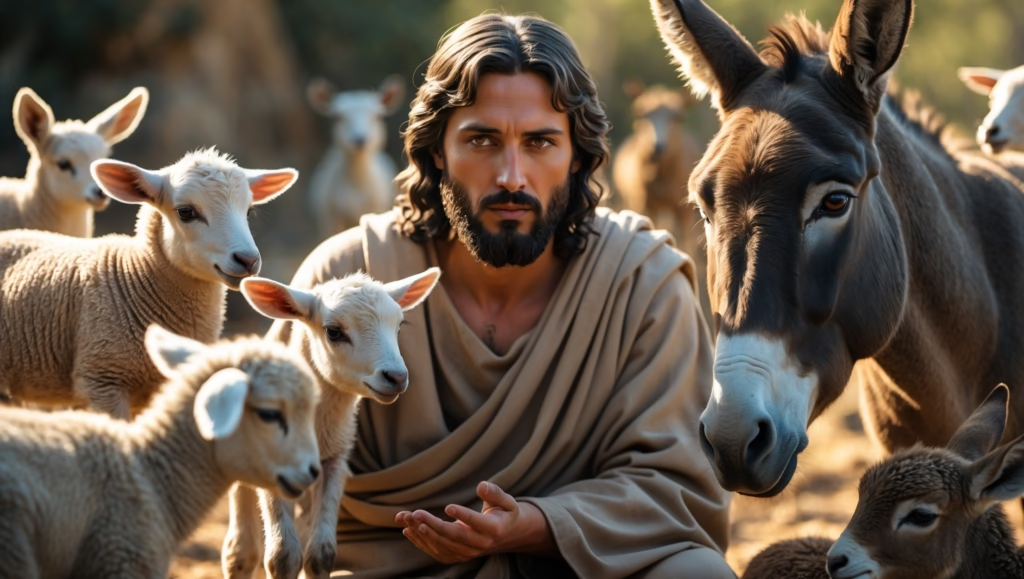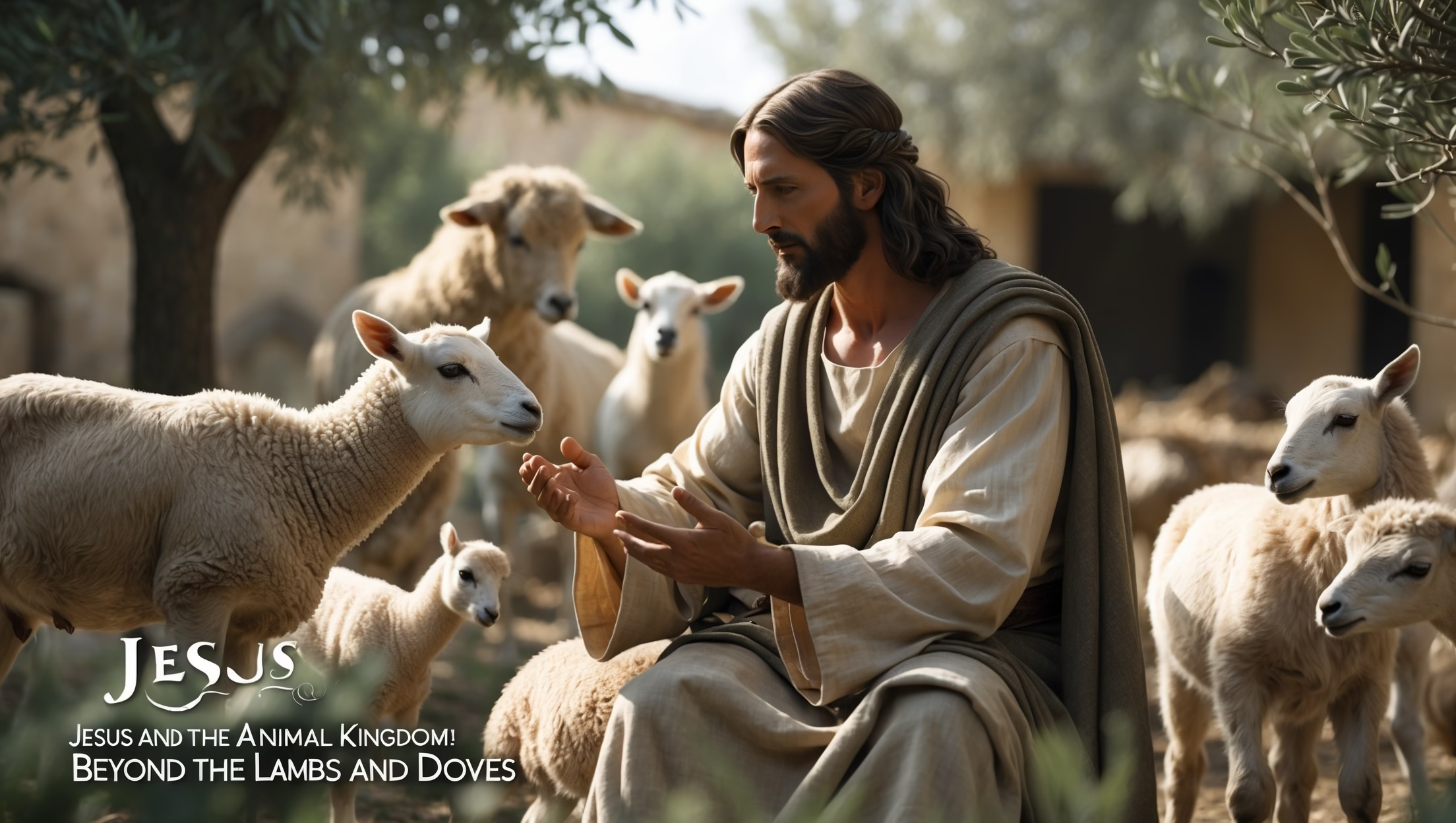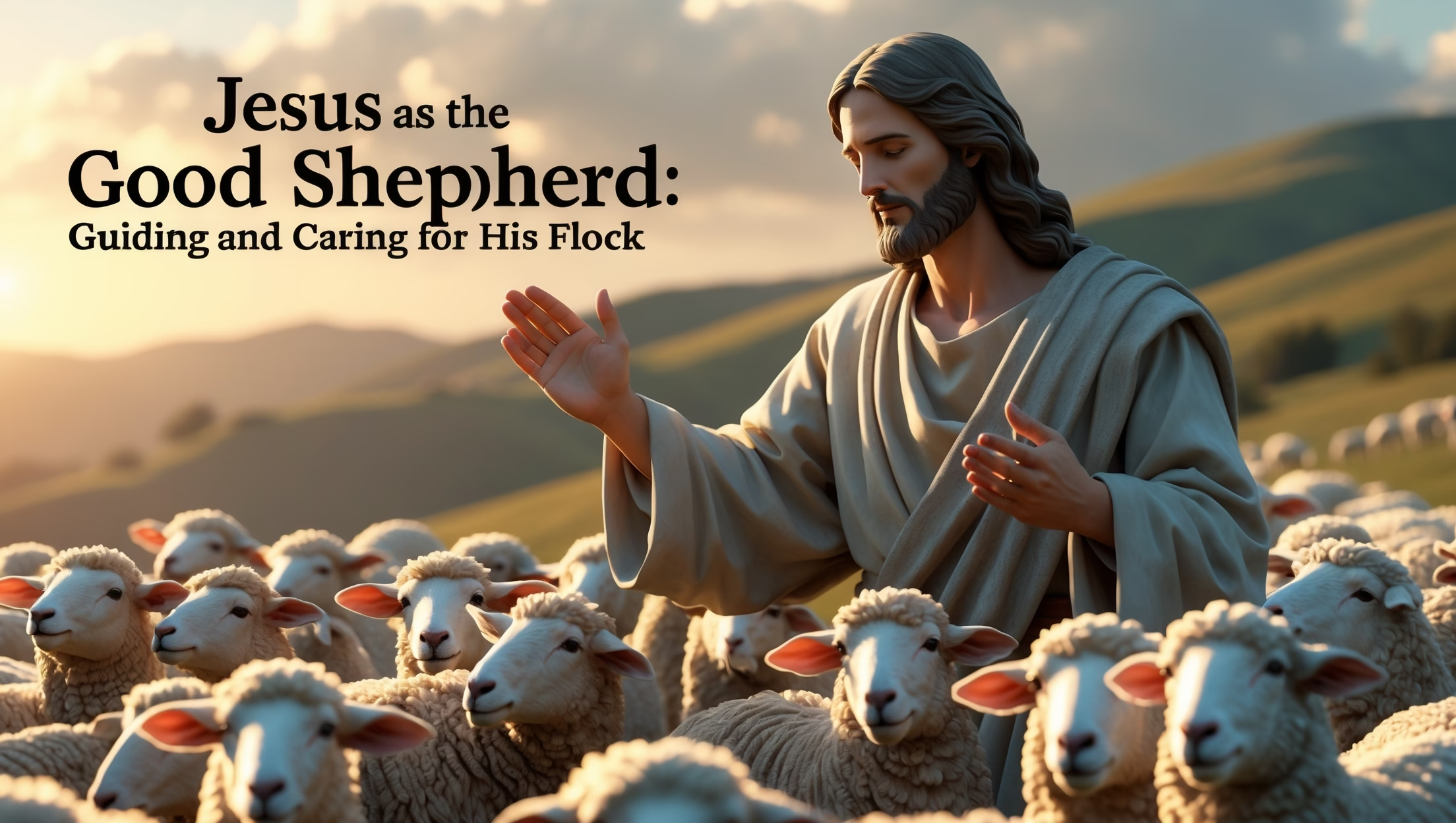The Messiah’s Unexpected Creatures
When we think of Jesus’ ministry, we often focus on His teachings, healings, and miracles. Yet the Gospels reveal frequent and sometimes surprising intersections between the Messiah and the animal world. Animals were not merely background elements of first-century Palestine; they carried symbolic, theological, and practical significance. From unbroken colts to swine, foxes, and birds, Christ used the natural world to communicate lessons about the kingdom of God, morality, and human responsibility.
Exploring Jesus’ interactions with animals offers insight into His ecological awareness, symbolic use of creation, and theological imagination. It also invites modern readers to reflect on the ongoing relationship between faith and care for the animal kingdom.

The Unbroken Colt: Peaceful Kingship in Action
One of the most vivid encounters is Jesus’ triumphal entry into Jerusalem, riding an unbroken colt (Mark 11:2–10). This event fulfilled Zechariah 9:9, which prophesied a king arriving “humble, and mounted on a donkey.”
The colt’s obedience was remarkable; it did not buck or resist despite being handled by someone unfamiliar. This interaction can be seen as a subtle miracle: Jesus’ authority over creation manifesting without force. The colt’s behavior symbolized the peaceful nature of His kingship, contrasting sharply with the violent and oppressive powers of the Roman Empire.
Modern biblical zoologists note that colts at that age typically exhibit stubbornness and flight behavior. The Gospel’s account emphasizes both the spiritual symbolism and the miraculous harmony between Christ and the animal world, underscoring the theological significance of even small creatures in His ministry.
The Gadarene Swine: Authority Over the Unclean
Another striking animal encounter occurs with the Gadarene swine (Matthew 8:28–32). In this story, Jesus casts demons out of two men into a herd of pigs, which then rush into the sea and drown. While the economic loss alarmed the local herders, the narrative illustrates profound theological and psychological points:
- Demonstration of power: Jesus exhibits dominion over spiritual and natural realms, including “unclean” animals.
- Moral teaching: The story challenges cultural and religious boundaries by showing God’s concern extends to all creation, including marginalized humans and unclean animals.
- Human responsibility: The event illustrates the consequences of spiritual and ecological disturbance, highlighting interconnectedness between humans and animals.
Modern readers might connect this narrative to ethical treatment of animals, showing that Jesus’ interactions were both spiritually instructive and attentive to the natural order.
Foxes Have Holes: Wildlife as a Teaching Tool
In Luke 9:58, Jesus observes, “Foxes have holes, and birds of the air have nests, but the Son of Man has nowhere to lay His head.” Here, wildlife observation becomes a metaphor for discipleship and the cost of following Him.
By contrasting the security of animals with human vulnerability, Jesus communicates lessons about dependence, humility, and perseverance. Interestingly, He also alludes to Herod, nicknamed “the fox” (Luke 13:32), highlighting both literal and symbolic layers of meaning.
This approach demonstrates Jesus’ attentiveness to the natural world as a source of wisdom, showing that animal behavior could inspire reflection on human priorities, faithfulness, and social dynamics.
Birds, Lambs, and Other Creatures: Everyday Lessons
Beyond these dramatic narratives, Jesus frequently referenced common animals in parables and teachings:
- Birds of the air: Used in Matthew 6:26 to illustrate God’s providence.
- Lambs and sheep: Symbolizing innocence, vulnerability, and the faithful (John 10:11).
- Dogs: Referenced metaphorically in Matthew 7:6 and Mark 7:27 to challenge cultural and religious assumptions.
These examples reflect a consistent method: using creation to teach moral, spiritual, and relational truths. Animals were integral to His pedagogy, both as concrete examples and symbolic messengers.
Modern Conservation and Faith-Based Animal Care
Jesus’ engagement with animals resonates in contemporary Christian contexts. Faith-based conservation movements, such as Christian animal welfare initiatives, draw inspiration from the Gospel’s attentiveness to creation.
Institutions like the Jerusalem Biblical Museum of Natural History promote biblical zoology, studying first-century ecosystems to understand the animals Jesus referenced. These programs highlight stewardship, ethical treatment, and ecological awareness—continuing the theological message that creation is valuable and interconnected.
Theological Implications
Jesus’ interactions with the animal kingdom reinforce several theological principles:
- Divine authority over creation: Miracles involving animals demonstrate God’s power permeating the natural order.
- Symbolic teaching: Animals served as metaphors for spiritual truths, human behavior, and ethical guidance.
- Care and stewardship: The narratives invite believers to recognize the intrinsic worth of creation.
- Integration of everyday life into faith: Animals, common to first-century rural life, illustrate that God communicates through ordinary aspects of the natural world.
By studying these encounters, believers gain insight into the holistic nature of Jesus’ ministry, one that integrates humans, animals, and the environment into a unified theological vision.
Key Insight: Animals in the Gospels as Messianic Signposts
The Messiah’s ministry was not confined to people alone; it extended to all living creatures. From the unbroken colt to the Gadarene swine, from foxes to birds, Jesus demonstrated relational intelligence, symbolic insight, and divine authority over the natural world. These narratives invite modern readers to reconsider the place of animals in spiritual reflection, ethical responsibility, and biblical interpretation.
Animals in the Gospels are more than supporting characters—they are integral to understanding Jesus’ teaching methods, His care for creation, and the broader implications of His kingdom. By recognizing the theological and ethical dimensions of these encounters, faith communities can embrace a more holistic vision of God’s care, encompassing humans, animals, and ecosystems alike.









